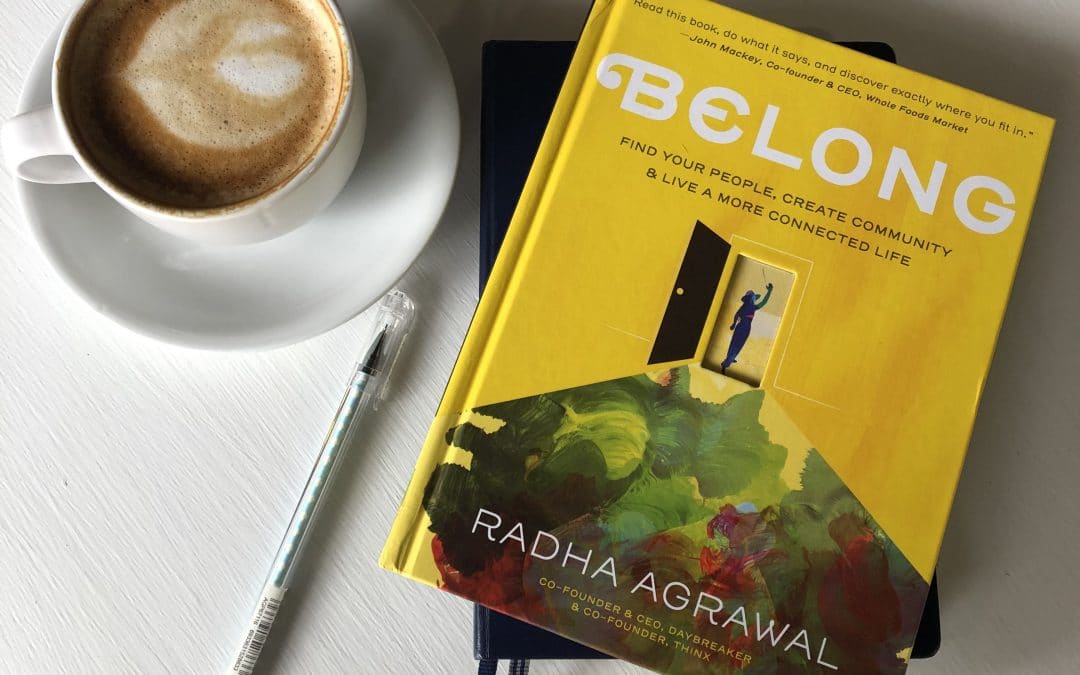A review of Belong: Find Your People, Create Community, and Live a More Connected Life
It’s a conundrum that’s deeply familiar: We are now more technologically connected than ever, yet we seem to be more and more isolated. These feelings are so widespread that some consider isolation a public health crisis.
In Belong: Find Your People, Create Community, and Live a More Connected Life: , author Radha Agrawal offers a blueprint for combating isolation and building more intentional relationships to in turn build better communities. Agrawal is co-founder and CEO of Daybreaker, a morning dance community that provides a physical space for people to connect, self-express, and sweat.
With friendly and conversational writing, Agrawal invites readers to reflect on her ideas through workbook sections on topics including personal history, friendships, suggestions for changing how we interact with others, and how we nurture communities. I was particularly drawn to the section on the fear of missing out (FOMO), a concept that can be useful for navigating interconnected friendships and social media, because Instagram is a FOMO-generating machine. It’s easy to feel left out when you see people being together without you, and Agrawal has some useful conversational tips for navigating such a minefield.
While Agrawal is correct in diagnosing the issue problem, many readers may not find all her solutions accessible or useful.
Belong does not address the real physical and structural realities that make building community difficult and lead to us feeling disaffected and disconnected. For example, how do we sustain communities in cities where rising housing costs and gentrification are disrupting neighborhoods and causing families and businesses to leave? Strikingly, she never mentions how having or caring for children might affect our ability to make connections and nourish community—either positively or negatively. And who has time to think intentionally about every friendship when many women are in the trenches of juggling work and caregiving responsibilities?
Agrawal is correct that our current climate facilitates an abundance of weak social media ties at the expense of fostering fewer but stronger real-world social ties. Ultimately, though, she may do a disservice to her readers who may not be aware of the long-standing sociological conversations about community and civic engagement, which are largely absent here.
How we build community is deeply tied to the physical and social structures that surround us. As sociologist Eric Klinenberg argues in his recent book, Palaces for the People: How Social Infrastructure Can Help Fight Inequality, Polarization, and the Decline of Civic Life, we need more than shared values and communities; we need shared spaces to strengthen those connections. Companies like Agrawal’s Daybreaker may provide space for connection and community for some people, but her book may invalidate the experiences of those who do not fit within her specific mold.
Outside of those concerns, Sweet Janes may find Agrawal’s candor, self-reflection, and suggestions for building relationships useful, but I would urge interested readers to find a copy of the book at their local library. In doing so, they will support the kind of physical structures that cultivate and nourish local communities.
Many new technology companies have made millions of dollars on the idea that the only communities we need are virtual. But as Agrawal’s book underscores, and others have argued, we know deep in our bones that online relationships are not enough. We also need in-person relationships to nourish and sustain us.
After all this change, it’s funny to realize that the communities we need most are the old institutions, like libraries, built for everyone, with no entrance fee, that are designed to bring people together.
